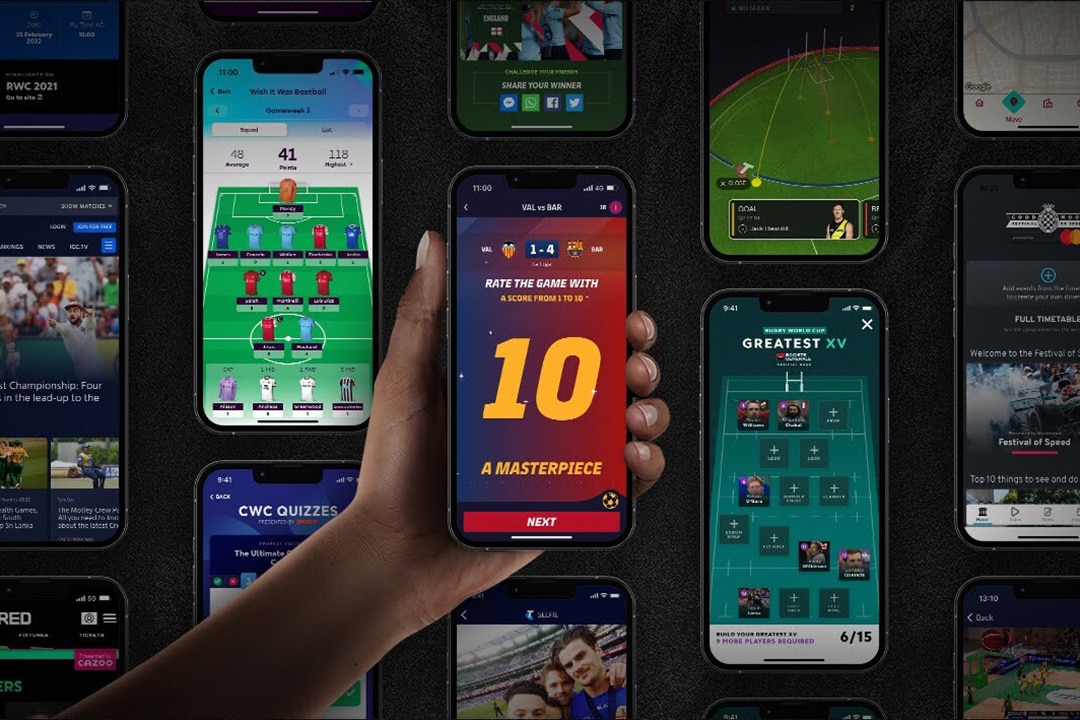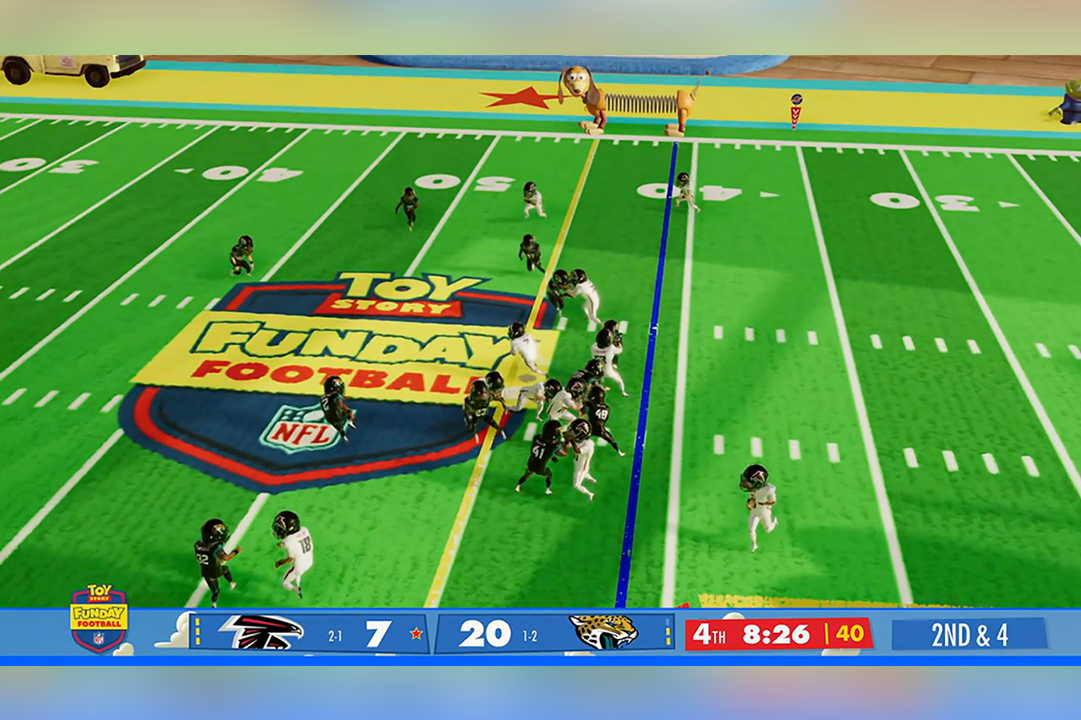Cutting Edge
All IoT devices in the world might be connected to ELTRES in the future
Jul 31, 2019

According to a certain report, about 40 billion IoT devices will be used around the world in 2020. It is expected, in particular, that outdoor sensors to be used for agriculture and livestock faming or flood control by monitoring the water level of dams and rivers continue to grow in their demands. To assist in communication between such IoT devices, Sony developed its unique Low Power Wide Area (LPWA) wireless communication standard “ELTRES.” What technologies are used for ELTRES? What efforts have been made behind the development of ELTRES? We will hear the stories of three engineers deeply involved in this development.
Profile
-
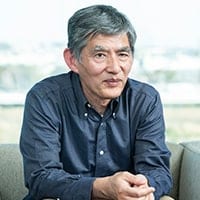
Seiji Kobayashi
Platform Technology Division
Sony Semiconductor Solutions Corporation -
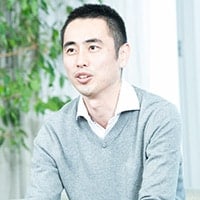
Yusuke Yoneyama
IoT Solutions Business Division
Sony Semiconductor Solutions Corporation -

Kentaro Nakahara
IoT Solutions Business Division
Sony Semiconductor Solutions Corporation
ELTRES was born from the optical disc technology
──First, when and how did the development of the LPWA wireless communication standard for IoT applications start in Sony?
Seiji Kobayashi:The idea itself existed from around 2010. If the transfer rate drops down to 0.5 bps, the communication distance should be able to get longer, on condition that the sync detection must be facilitated by using the GPS satellite signals for time synchronization. That was the theory, and the business model we drew up then was to offer the service by deploying 250 receiving base stations across Japan, with the investment cost of 250 million yen. When we did the brainstorming for it within the company at the end of 2012, the idea sounded interesting and challenging, and it was formed to an official project in April of 2013.
──What background led to the LPWA idea?
Kobayashi:The original technology comes from optical discs. Optical discs manufactured and sold by Sony incorporate the technology that protects content against piracy as copyright protection, and this technology can extract a very small amount of signal from the noise. If this technology is applied to wireless networks, it may be possible to obtain data from a long distance. This is the starting point of the idea. At first, I started all by myself.
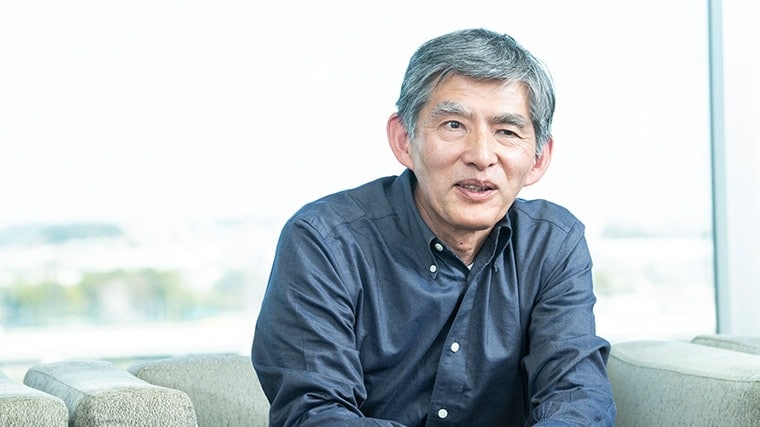
──In what phase, did you two join Koyabayashi-san’s project?
Yusuke Yoneyama:I joined his project when Kobayashi-san had created the test model and enabled data transfer at a short distance. Before joining him, I had worked on the development of a receiver LSI for television sets, and when I was just finished with the development, Kobayashi-san invited me.
At the beginning, we had many issues including the inability to extend a distance. To seek a way to solve those problems, we created a receiver prototype. As I mentioned earlier, I had been working on the development of circuits and components for TVs since I started working in Sony. A television receiver must be able to show proper visual images even if there are non-television interfering signals in the electrical waves, so I had always used care to ensure immunity to disturbance waves. Using this know-how, I aimed to complete the technology for ELTRES that achieves signal reception under any radio wave environment.
It was also hard for me to find allies while developing a prototype. Our project was still small, and in order to find potential partners who would agree to our concept and collaborating together in business, I had to cut out my development time and visited various business shows and exhibitions for distributing my name cards and later visiting as many companies as possible. I even contacted my old colleagues and old university classmates by email.
Kentaro Nakahara:I joined the team two years ago, before which I had been involved in the development of a different communication method in a different section on the same floor. When the ELTRES business started, I joined the team with responsibility for refining the prototype developed by Kobayashi-san and Yoneyama-san into a commercially available product.
Features achieved by “rough work”
──The features of ELTRES are “robust long-distance communication,” “high-speed mobility communication,” and “lower power consumption.” Why are those features possible?
Kobayashi:Typical communication technologies are designed to have redundancy to allow for versatility or compatibility. The communication format of ELTRES, by contrast, is optimized fully focusing on the enhancement of long-distance communication. For example, the data length transmitted by ELTRES is 128 bits, which is a fixed size and cannot be changed, removing the necessity for a transmitter to tell a receiver about the data length. This can increase the communication performance. In addition, a regular communication system starts communication by sending a preamble, which is a signal to indicate the initiation of the communication. This will be a load on the transmitter as well, so ELTRES has eliminated this preamble mechanism. Since the transmitter and receiver are synchronized with each other using the GPS time, this rough work is possible.
Furthermore, a typical communication system usually inserts a sequence of signals called “synchronization patterns” to keep synced. In ELTRES, however, this sequence of synchronization patterns is divided into smaller units and dispersed within the signals at a regular interval. Since a synchronization pattern appears at a constant period, performing the Fourier transform, which decomposes the signal on a frequency component basis, can detect channel fluctuations. This is the great advantage of ELTRES, being able to detect the communication target while it is moving fast at a speed of more than 100km/h.
──In the development race of the LPWA network technologies, how do you see Sony positioned?
Yoneyama:As a result of studies in terms of whether our system can really win worldwide, we found similar technologies in Europe. But their key features were different from ours, and our communication method was superior to them in communication quality. We have concluded that if we further enhance that point, we can effectively differentiate from our competitors.
Kobayashi:Our method is made of all technologies collected across Sony, which is decisively advantageous.
Yoneyama:Yes, exactly. By incorporating the cutting-edge technologies, we have built an excellent system that offers high-quality and stable communication.

──Specifically, what Sony technologies are used?
Yoneyama:The method in the communication system itself makes use of the optical disc technology cultivated by Kobayashi-san, but when it comes to product development, the semiconductor technology is required, for example. In the case of television, a tuner LSI, which can always receive broadcast signals properly while various radio waves other than TV signals are flying about, is the result of research and development on the circuit technology over years in Sony, and we incorporate such a high-level LSI by simply transplanting it into our receiver.
For the transmitter, on the other hand, we developed a lower-power, effective transmitter LSI on our own. All of these flexibilities in combining the existing technologies and creating a new one to be best suited for the purpose are also the reason we can have great differentiation from other companies.
Kobayashi:And one more thing to note—the error correction technology Sony has been good at since its early times. If noise comes in, data is likely to have errors, and the error correcting technique will detect and correct such erroneous data. Sony has cultivated this technology for thirty or forty years, and we are using the latest version of this technology, which is used in Sony TV BRAVIA as well.
The first generation was designed for experiment on the communication principle, and the communication distance was 2km or so within a TEC facility. The second generation was created for experiment to extend the distance. After a lot of trial and error efforts, the distance was dramatically extended as 8km → 42km →147m → 274km. The third generation was developed to conduct the verification test on the ELTRES technology and it was released as a PoC kit.

Possibility toward the IoT era
──Compared with 2013 when you started the development, what have changed dramatically in the world, like new technology innovations or social environments?
Nakahara:In the past few years, the word “IoT” became familiar to the public. Various applications that were not offered wirelessly are now starting to appear to deliver wireless services. High-performance sensors and microprocessors are offered with lower prices. Data processing technology has also been advanced, making it possible to extract meanings from data vastly collected from deep learning and other methods. These changes are happening concurrently. And now all that we need is connectivity. High-end usage may be delivered by 5G networks, but there is a practical need to simply transfer a small amount of data at low cost, which is why more attention is being given to LPWA over these years. The LPWA network technology is just starting to expand, and it is very difficult at this moment to predict in which fields this technology can be best utilized.
──As one of ways to predict it, in what fields or which regions are you performing demonstration experiments now?
Yoneyama:An example of the experiments we are doing is child monitoring. We ask young children to hold a device and verify whether they can be located through the signals transmitted from the system. This experiment has recently been extended to senior citizens who are participating in disaster evacuation drills, allowing us to verify whether their safety can be confirmed through the system.
In addition to such business demonstration experiments, we are conducting communication experiments at the same time—how far the communication distance can be extended or in which area we can use it. For example, LPWA is used to sense and manage telemeters, which are kind of meters located in various places for automatic measurement and transmission of data from a far place, and we are also trying to examine whether our system can be used for electricity or gas metering.
Furthermore, we sponsored Adventure Race Japan, a racing event held in the Nagano Prefecture last year, as part of the demonstration experiment. This adventure racing is called the toughest race on the earth, where athletes race all through the day and night for three days by trail running, mountain biking, rafting, and so on, to complete for speed, just relying on the map indicating the start and goal points and some checkpoints only. Before holding this event, the race management office contacted us to seek our help, telling that they couldn’t find tracking devices to be alerted and rescue when accidents happened with participating teams or to instruct racers to abandon the game when they exceeded the given time. Most of the courses in this event were out of the 3G/LTE service coverage offered by major telecommunications carriers. In response to this request, we provided our transmitters and receivers, and we were able to gain knowledge about radio propagation in mountainous areas and devices to be attached to runners in this opportunity of helping them. We also received great gratitude from the race management office as they were able to watch over participant teams and course sweepers. Our system allowed them to learn in detail, just from the map screen, whether teams were lost in the mountains or how they were competing with each other in real time. We’ve got feedback from them that this use could be extended to the entertainment business.
Kobayashi:Speaking of Nagano, what is catching their interest now is thermometers. Placed within a plastic greenhouse, the thermometer measures the temperature every three minutes and uploads the data into the Internet. The mechanism is very simple, but it is very well accepted among farmers. Some might say Wi-Fi could do it, but some of their greenhouses are 200 meters long. Wi-Fi cannot cover such a long-distance range.
When the temperature drops down in winter, the boiler automatically heats a greenhouse. If the boiler runs out of fuel, the farmer needs to hurry to the greenhouse to avoid the low temperature damage to the seeding. If this smart thermometer is used, however, the greenhouse temperatures can be remotely monitored. In this way, unexpected applications of LPWA are appearing one after another. The next needs coming after the temperature might be about the condition of plant roots or the state of carbon dioxide.
Significance of reaching a far distance
──Actually, how far is communication possible with ELTRES?
Yoneyama:By placing our transmitter in the meteorological station in Mt. Fuji, we are conducting an overwintering test. Along with this experiment, we are carrying around the receiver to check how far radio waves can be transmitted. The current longest record is 321 km. Since the earth is round, the further the distance is, the more obstacles such as mountains get in the way. However, we heard about a spot in Nachikatsuura, Wakayama Prefecture, which is the most distant location where you can take a picture of Mt. Fuji. We all team members visited there on a weekend and successfully received signals from our transmitter.
Many people tend to think, “Of course, signals can reach you if there is nothing to block your sight.” But it isn’t that easy because it practically requires high-level technology. The frequency band we are using for LPWA is a so-called “Unlicensed Band,” which does not require licenses for frequency band use unlike mobile phones. That means various radio waves including transmissions for smart metering and other purposes, as well as those for ELTRES, are flying around in that band. In order to ensure constantly-stable communication in that crowded band, regardless of how far the distance is, it involves synthesizing the received multiple waveforms to strengthen the sensitivity, correcting data using the error correction code (ECC), and removing various interferences in communication. Embedding the circuits and algorithms that do all these tasks in the receiver is actually a high-level technology. Our achievement of receiving signals from a distance as far as 321km is an outcome of outstanding Sony technologies, such as the error correction technology, as Kobayashi-san mentioned before, and the receiver circuit technology, combined.
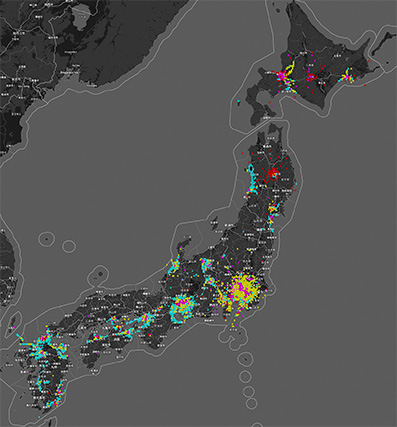
Demonstration experiments across Japan (experiments conducted by Sony and those by PoC kit licensee customers) Colored areas: Communication with receivers in 30 locations around Japan was successful
──The fact communication is possible at this long distance—what does it mean in the future?
Yoneyama:It means that one base station alone can cover a wide area, which will lead to a major advantage. Establishing many base statins is directly linked with high cost. ELTRES assumes its system will be installed in various sensors, and lower cost is better.
──Could you give me an idea of how much the cost would be?
Kobayashi:In the case of mobile phones, it is said that the communication range from a base station is 1 to 2km in radius. With ELTRES, although it depends on the locations, it can easily cover at least a 10 to 20km radius. It is ten times in radius, and if it is squared for area calculation, ELTRES just needs 1/100 of the base stations for mobile phones. It is considered that almost 400 thousand base stations have been established for mobile phones in Japan, but ELTRES will be able to cover the area only with 1,000 stations or so, according to our estimation. Lower cost for building and running base stations can incomparably reduce the line cost, too.
Yoneyama:If it is so cost effective, it will be realistic to attach communication devices to things, in addition to people. As I mentioned earlier, controlling temperatures using the greenhouse thermometer is one example. Watching over reservoirs or small or medium-sized rivers through sensors in order to monitor the water level or detect structural damages in bridges is another use case. Maintenance work like these purposes is traditionally carried out by people’s efforts at some high cost, but if remote controlling and managing with the sensing and communication technology can replace it, the whole society’s maintenance costs should be largely decreased.
In the future, some serious issues are waiting for us, such as various infrastructures getting old and labor shortage making it difficult to manage them. However, I think ELTRES could help solve these problems if efficient use for their maintenance or management is established.
Nakahara:On the other hand, long-distance communication implies an incredible number of devices existing within the reception range. Our receiver therefore needs to process 100 times more than mobile phones, which was the most difficult challenge when we developed a product from the prototype.
Using many sophisticated wireless technologies, including the error correction technology, conversely means imposing heavy load on the processing. Actually, we had difficulties on this point, and in order to address this challenge, we decided to use hardware called FPGA (Field Programmable Gate Array), instead of relying on the CPU, for signal processing, aiming to deliver 100 times faster speed. Additionally, we have employed the SDR (Software Defined Radio) technology, which enables radio communication based on software. This technology has been researched and developed for a long time within Sony, and we are very proud of using this technology, an outcome of accumulated efforts of the company over years, in ELTRES.

What challenges toward the future?
──Do you have any other challenging issues?
Yoneyama:We need to elaborate the system as a set product. Consideration points, such as what data should be packed into the small payload or how many times are appropriate to transmit data per day, will be different depending on use cases.
We will identify specific issues in the course of demonstration experiments, but they are not clear yet. I think each time we encounter a new challenge, we should be collaborating with partner companies or local governments to work it out together.
Nakahara:ELTRES is a really effective communication system. It obtains time information from the GPS and synchronizes with it to adjust timing between transmission and reception. It is a one-way communication architecture to enhance its strength to the full extent. In order to differentiate from other wireless network technologies that try to do everything, we will continue to selectively focus on the strength of ELTRES, while at the same time complimenting weakness through further research and development.
──How is the standardization going on?
Kobayashi:In 2018, the ELTRES technology was released as the international standard from the European Telecommunications Standards Institute (ETSI). ETSI is a standardization organization in the telecommunications industry in Europe and publishes standards for mobile phones as well. Usually, it takes five to seven years to have a proposal approved and published as a standard from ETSI, but thanks to UK members’ help and cooperation, our case was completed after just one year. Moreover, what we intended to do with ELTRES were 100% employed. I had been long engaged in standardization for optical discs, but this was my first experience to have all of my proposals employed into a standard.
Now, the IoT era is starting. It is said that about 40 billion IoT devices will be used in 2020 worldwide, and a growing number of organizations and entities are conducting active research and development. The wireless communication field is also flooded with various technologies at this moment, including those with a similar method to ELTRES. Under such circumstances, we do hope that ELTRES continues to evolve and finally becomes an industry-standard technology widely used by all IoT devices.
I’m sure these two young men will realize that.


